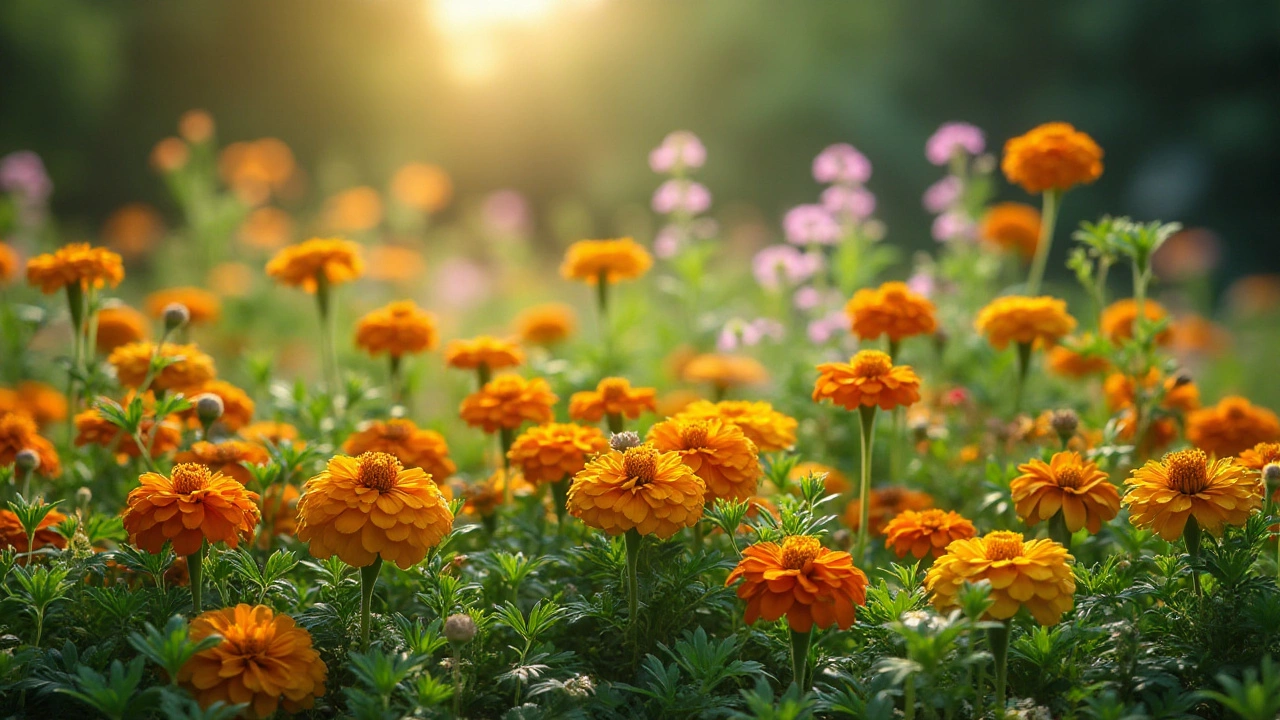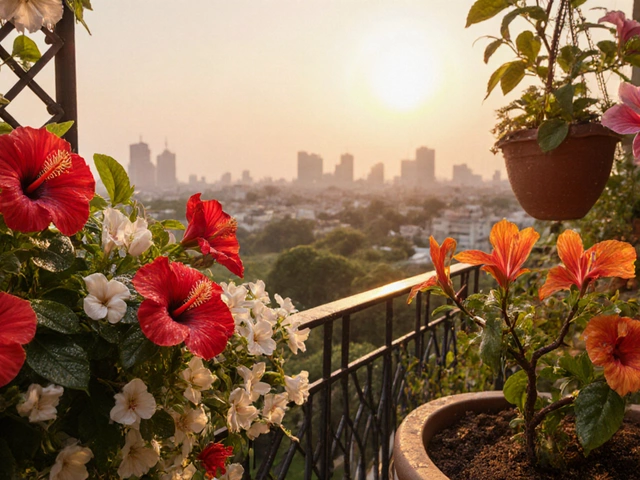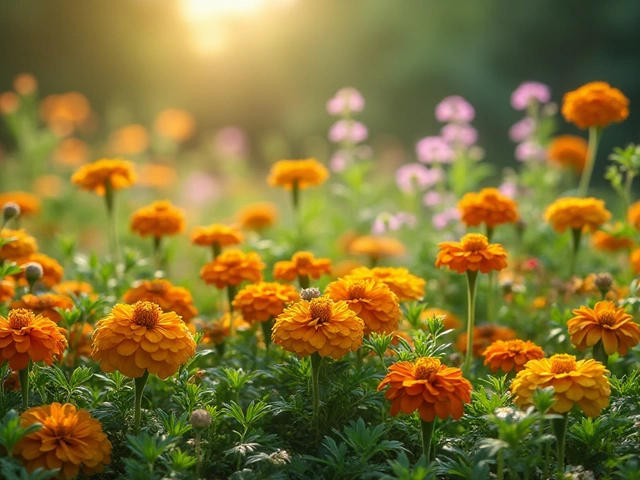Flower gardening is a much-loved pastime worldwide, and it holds a special place in India for its diverse climate and soil types. Many flower enthusiasts are on the lookout for blooms that enrich the landscape without demanding much time and effort. With the variety of plants available, selecting the lowest maintenance flowers is key to enjoying a beautiful garden with ease.
In India, where the climate ranges from tropical in the south to temperate in the north, finding flowers that can withstand the heat and varied rainfall is beneficial. For those who wish to enjoy vibrant blossoms without worrying about constant watering or pruning, several hardy species can flourish with little care.
This guide aims to introduce you to low maintenance flowers that fit perfectly into the Indian gardening scene. By embracing these hardy blooms, you can transform your garden into a paradise that thrives almost on its own. From understanding what makes a flower low maintenance to uncovering the most popular choices for Indian gardens, you'll be fully equipped to craft a delightful, low-effort garden space.
- Understanding Low Maintenance Flowers
- Popular Flowers for Indian Climate
- Tips for Maintaining a Low Maintenance Garden
- Benefits of Low Maintenance Flowers
Understanding Low Maintenance Flowers
Gardening is often perceived as a labor-intensive hobby, but by opting for low maintenance flowers, you can enjoy the beauty of nature without immense effort. These flowers are characterized by their ability to thrive with minimal care, meaning less frequent watering, pruning, and pest control. They are resilient against environmental stresses, which makes them perfect for the fluctuating climates observed across India. Whether you are in the scorching heat of Rajasthan or the humid regions of Kerala, these blooms adapt well, offering a vibrant display almost year-round.
To determine what makes a flower low maintenance, it’s crucial to consider several factors including drought resistance, sunlight tolerance, and soil adaptability. Flowers like marigolds and zinnias are excellent examples. Marigolds, for instance, are not just bright additions to the garden but also act as natural pest repellents due to their scent. Zinnias offer a splash of color and can withstand periods of drought, which is essential for areas with inconsistent rainfall. Understanding plant needs allows gardeners to choose appropriate species that match local climate conditions, making the gardening process enjoyable rather than stressful.
Incorporating such flowers into your garden aids in reducing water usage and maintenance time, leaving you free to enjoy the garden without it feeling like a burden. As a bonus, many easy-care flowers attract pollinators like bees and butterflies, contributing to a healthy ecosystem within your garden. A healthy ecosystem not only reduces problems with pests naturally but also enriches the soil, making it more fertile for future planting. Maya Gupta, a renowned horticulturist, once said,
"A garden that thrives effortlessly is one that is thoughtfully planned with nature's quirks in mind."
To help with your plant selection, utilize a bit of research - understand growth habits and regional compatibility. Analyze growth patterns; perennials, for instance, return each spring, saving you from yearly planting. You might encounter local variations of some species that are naturally adapted to the region's specific climate nuances, thus emphasizing their resilience. Additionally, by embracing a variety of native plants, you encourage biodiversity, which is crucial for a robust garden environment.
Consider making a list of potential plants that fall within the low maintenance category. This might include hardy perennials native to India or adaptogenic plants like bougainvillea, which are known for their vibrant blooms and ability to thrive under challenging conditions. Creating a garden that requires less work yet produces a stunning visual impact is certainly attainable when the right floral candidates are chosen.
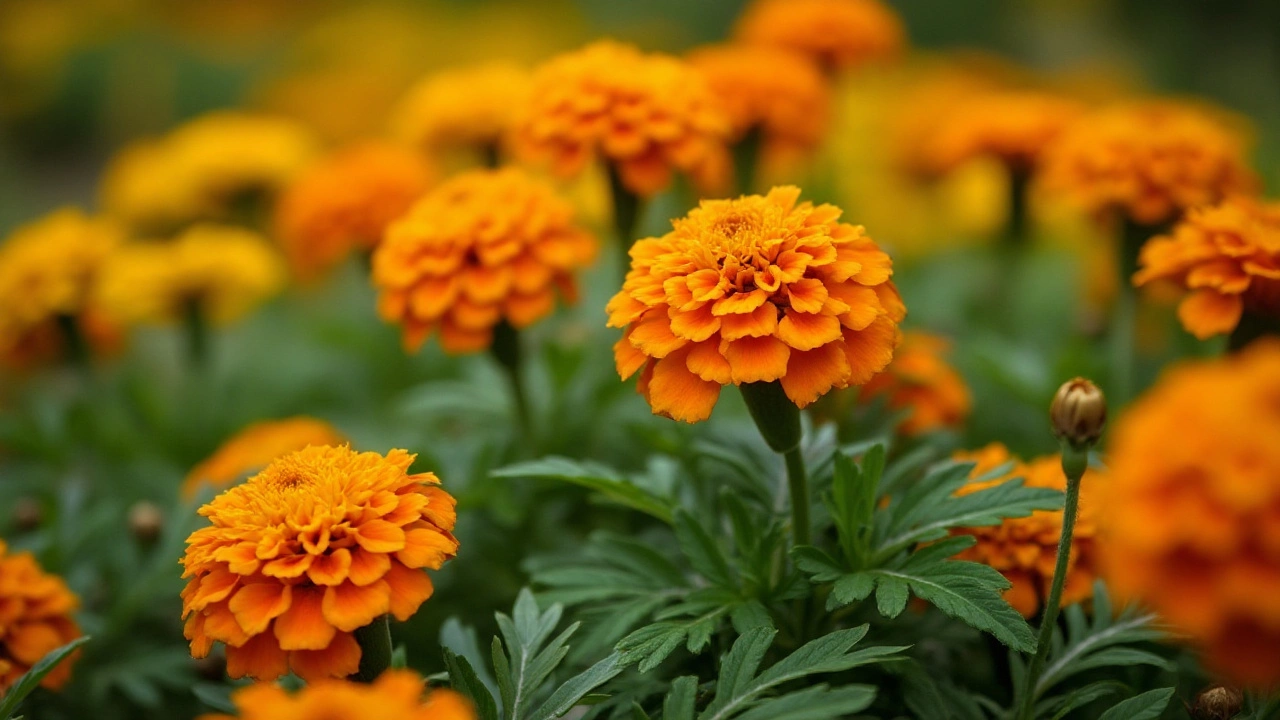
Popular Flowers for Indian Climate
India's diverse weather conditions allow for a wide range of flowers to prosper, but not all of them require extensive care. Selecting low maintenance flowers ensures a thriving garden with less effort. One of the most beloved choices are marigolds. Known for their bright and cheerful orange and yellow hues, marigolds are remarkably drought-tolerant and adaptable to various soil types. They're the quintessential Indian flower, gracing gardens, households, and even temple offerings. Plant these beauties in a sunny spot, and they will reward you with continuous blooms from spring until the first frost.
Consider the versatile zinnia, another champion in terms of ease and beauty. These flowers are especially resilient to heat and sun, perfect for India's often scorching summers. With a spectrum of colors ranging from deep reds to soft pastels, zinnias attract butterflies, adding an extra layer of life to your garden. They regenerate quickly, so deadheading these blooms encourages a non-stop color parade. Meanwhile, periwinkles, or vincas, stand as an enduring favorite for low maintenance gardens. Their glossy leaves and star-shaped flowers blanket the ground throughout the year. Known for their resistance to dry conditions and poor soil, they hardly ever attract pests, making them an excellent choice for any garden enthusiast aiming for vivid colors with minimal fuss.
In the cooler climates, such as the hilly regions of northern India, daisies provide a classic touch. Shasta daisies, in particular, are ideal due to their hardy nature and love for sunlight. Once planted, these friendly white petals require very little to thrive, happily enduring the neglect of a busy gardener. They also self-seed, allowing for a bounty of flowers with little intervention. Geraniums, although they might need some pampering in intense heat, can be a robust choice for cooler areas. Pruning and deadheading these plants result in an impressive floral display, proving their worth in any garden looking for impact without labor.
According to horticulturist Arun Bhardwaj, "The real challenge is to mix and match flowers so your garden is colorful and lively all year round. But with care, even the busiest of us can enjoy a vibrant garden."
Looking towards larger blooms, hibiscus is a popular choice, akin to small trees with giant, lush flowers. They adore full sunlight and thrive in high humidity, making them excellent for southern India's tropical atmosphere. Similarly hearty, bougainvillea provides a stunning backdrop with its cascading blooms of purple, pink, and red. Once established, they require minimal watering and pruning, thriving on neglect so much as to earn their keep in any busy gardener's plot. Indian garden flowers that demand little attention yet offer substantial beauty are what every nature lover seeks.
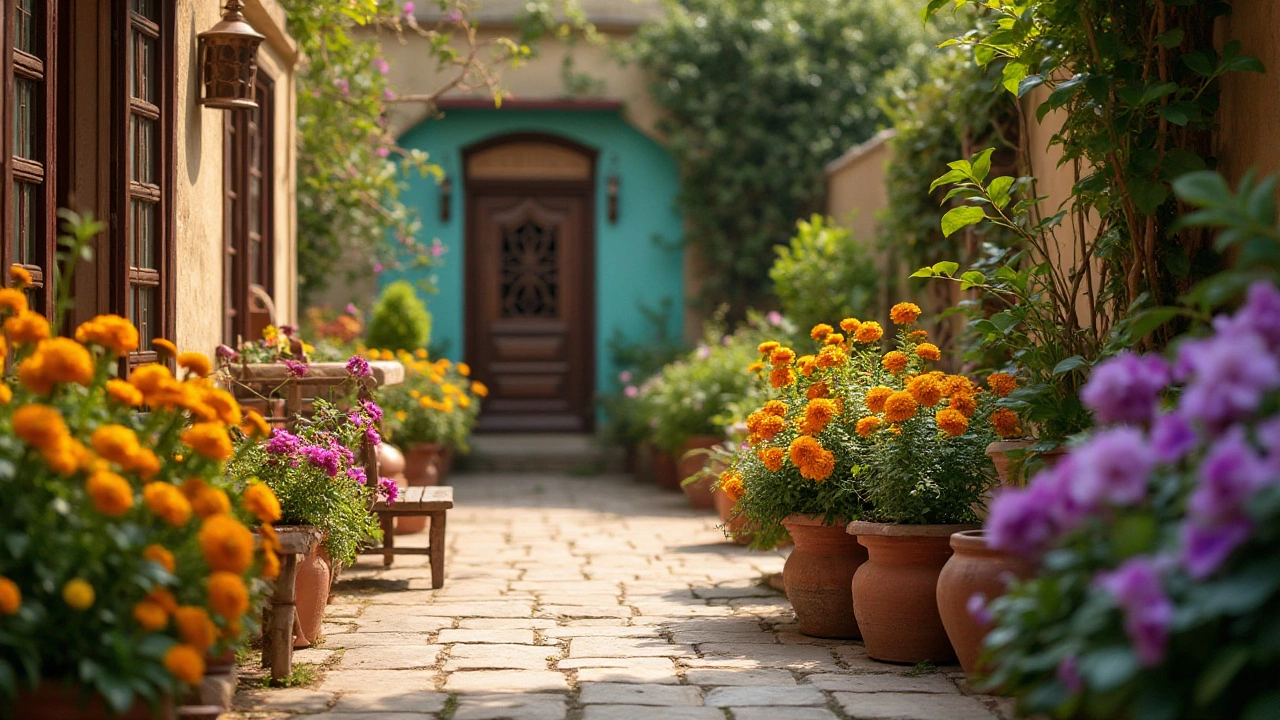
Tips for Maintaining a Low Maintenance Garden
Creating a low maintenance garden doesn't mean you need to compromise on beauty or diversity. The key is choosing the right plants and applying smart gardening practices to keep the workload light. Many flowers thrive in the Indian climate without demanding constant attention. To start, understanding your local climate is vital. This knowledge helps in selecting plant species that naturally thrive in your environment, reducing the need for intervention. Look for native plants or those adapted to your area's weather conditions as they are naturally more resilient.
When it comes to low maintenance flowers, selecting drought-tolerant species is paramount. These flowers are not just resistant to dry spells but usually require less water, making them perfect for Indian gardens where unpredictable rain patterns can sometimes pose challenges. Consider blooms like marigolds or zinnias, which not only flourish with little water but also add a splash of vibrant color to your garden. These flowers are known to thrive in sunny spots and can even tolerate partial shade, adapting to a range of light conditions.
One often underestimated way to keep garden maintenance low is by grouping plants with similar requirements together. This means choosing plants that have the same soil, water, and light needs and cultivating them in the same area, so that you reduce labor and resources. This method is also beneficial to ensure the health of the soil since overwatering or underwatering can be effectively avoided as all plants will receive their necessary care simultaneously. Moreover, mulching is an effective technique for reducing maintenance efforts. A layer of mulch can help in retaining soil moisture, suppressing weed growth, and regulating soil temperature, which means less watering and weeding on your part.
Design plays a crucial role in shaping the maintenance level of your garden. Using raised beds can improve drainage and reduce the need for constant soil amendment. Raised beds often encourage a more orderly planting scheme, making it easier to care for your plants. Encouraging beneficial insects like ladybugs or lacewings can also naturally keep pests in check, minimizing the need for chemical interventions.
"An ounce of prevention is worth a pound of cure," says noted horticulturist Jack Elger. This holds especially true when integrating organic pest management practices in a low maintenance garden.With strategic practices in place, you can enjoy a flourishing garden without the tyranny of high maintenance demands.
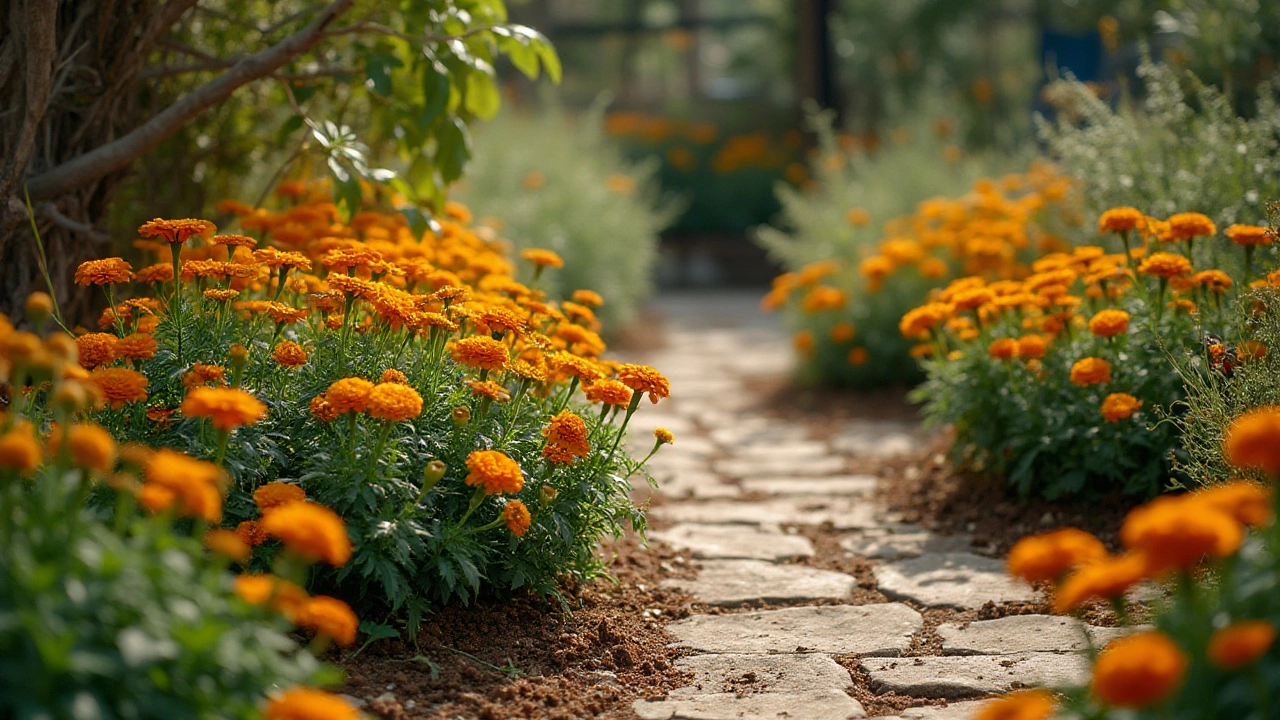
Benefits of Low Maintenance Flowers
Gardening can often seem daunting, especially for those who are new to the art or have busy schedules. This is where the charm of low maintenance flowers comes into play. One of the most significant benefits of these resilient blooms is the considerable time-saving aspect they offer. Since these plants do not require frequent care such as daily watering, deadheading, or pruning, you can have a flourishing garden even with limited gardening time. This means less stress about keeping up with garden tasks and more time to enjoy the flowers themselves.
For the Indian gardener, choosing easy-care flowers can also help cope with the diverse climate, extending from the heat of a Rajasthan summer to the heavy monsoons in Kerala. These plants are not only tough but also incredibly adaptive, offering vibrancy through different seasons. Since they're hardier, there's less need for fertilizers or pest control, which makes the gardening process more environmentally friendly. The reduced requirement for chemical intervention benefits the local ecosystem, attracting pollinators such as bees and butterflies.
Financially, selecting easy-care flowers proves to be economical. A garden comprised of these species is easier on the pocket, reducing the costs associated with water, fertilizers, and pest control products. Moreover, because these flowers are often more resistant to diseases and pests, your investment in the garden is protected. According to the Royal Horticultural Society, choosing the right plants for the right place significantly enhances their chances of thriving without much intervention.
"Gardens should be a source of pleasure and delight, not just hard work," notes Malcolm Crispin, a renowned gardening expert.By opting for flowers that naturally align with the existing climate and soil conditions, gardeners can create beautiful spaces with fewer resources.
It's not just about practicality. The sheer joy and satisfaction of observing a garden that bursts into color almost effortlessly is immensely rewarding. With flower gardening in India becoming more popular, many gardeners are recognizing the aesthetic appeal of robust, yet stunningly beautiful, blooms. Whether it's the golden petals of marigolds or the striking hues of bougainvillaea, these flowers can transform any garden into a vibrant tapestry with little upkeep. Ultimately, low maintenance flowers provide a way to enjoy the beauty and the therapeutic benefits of gardening without the demands that often accompany it.
